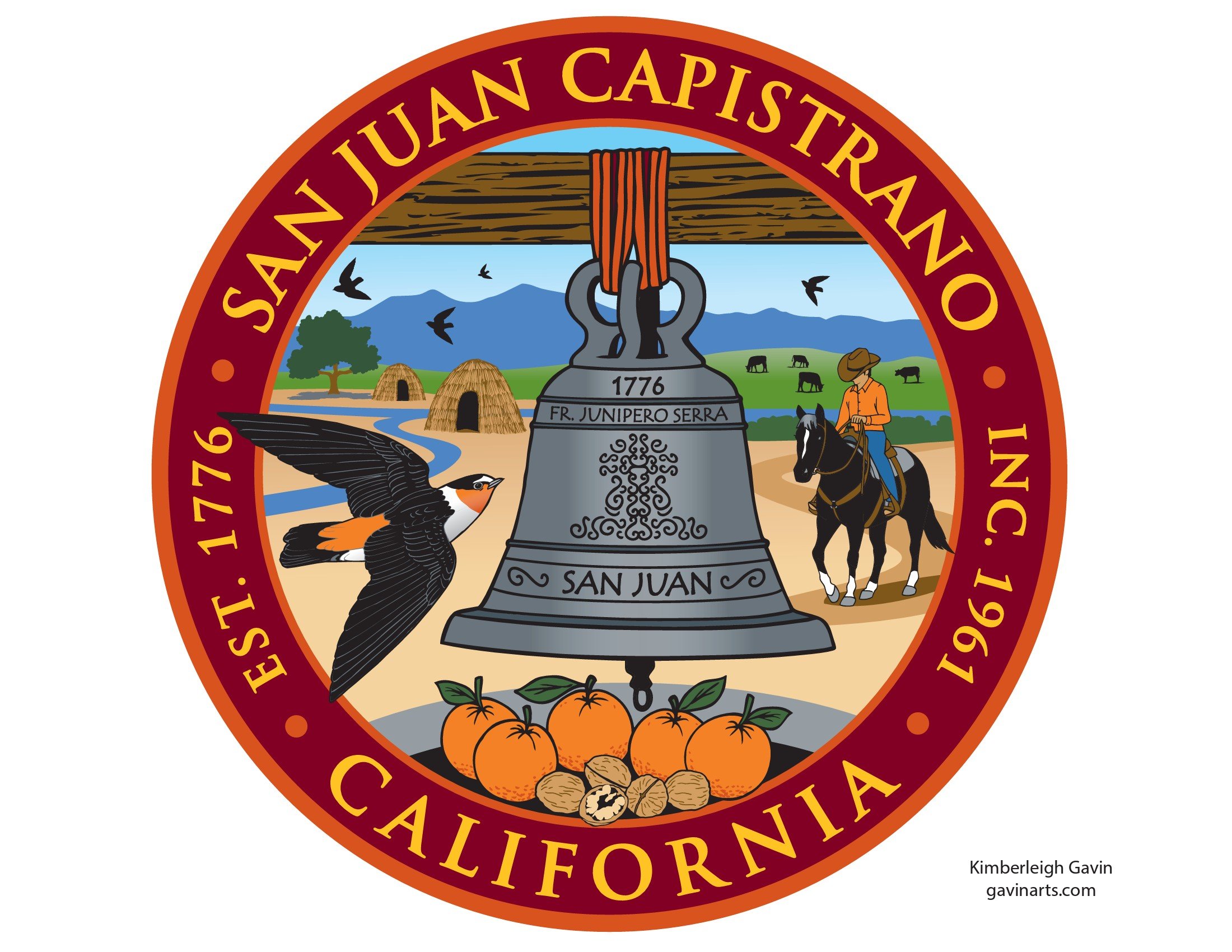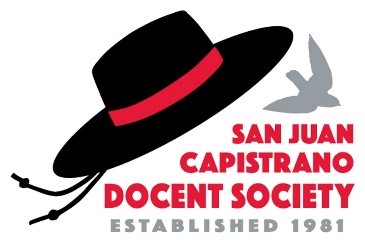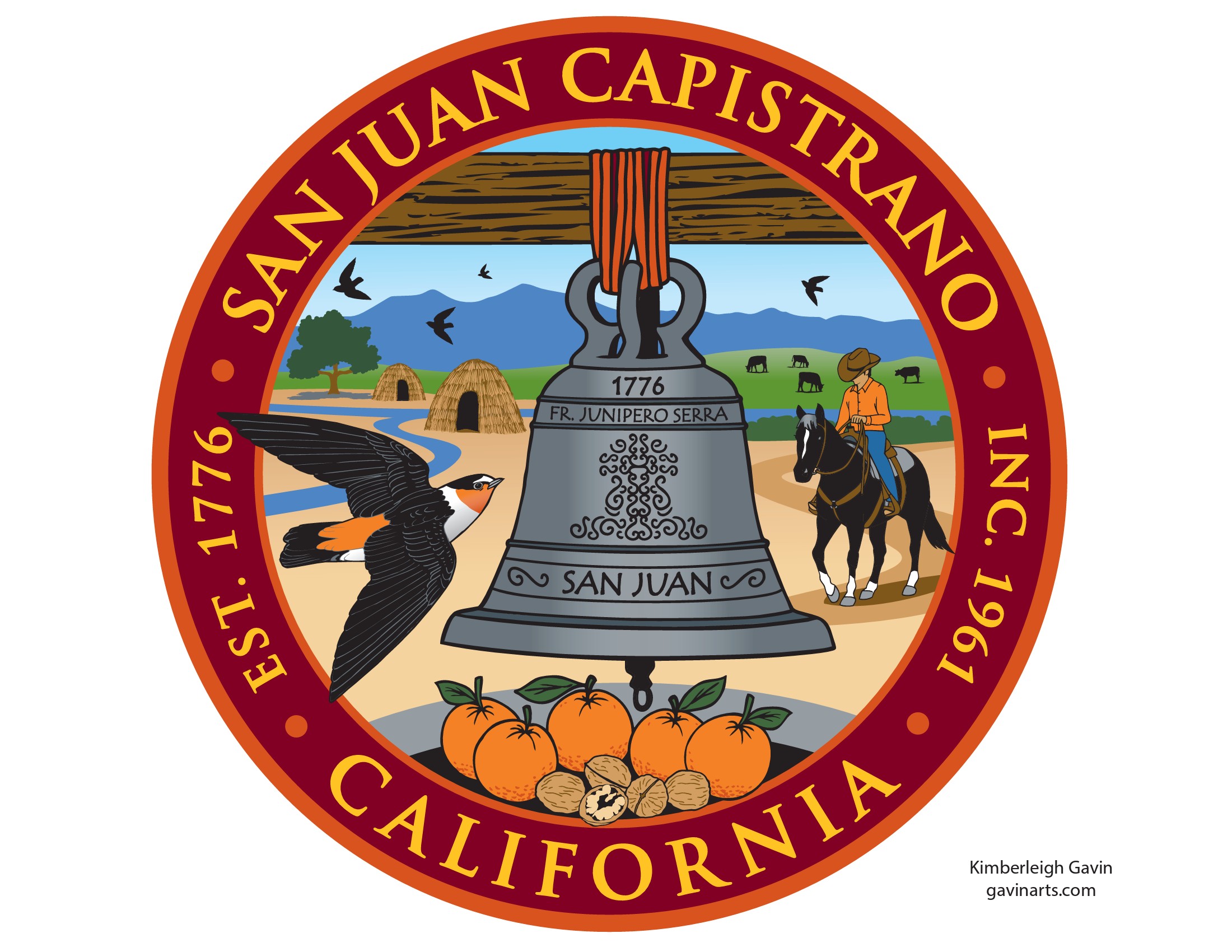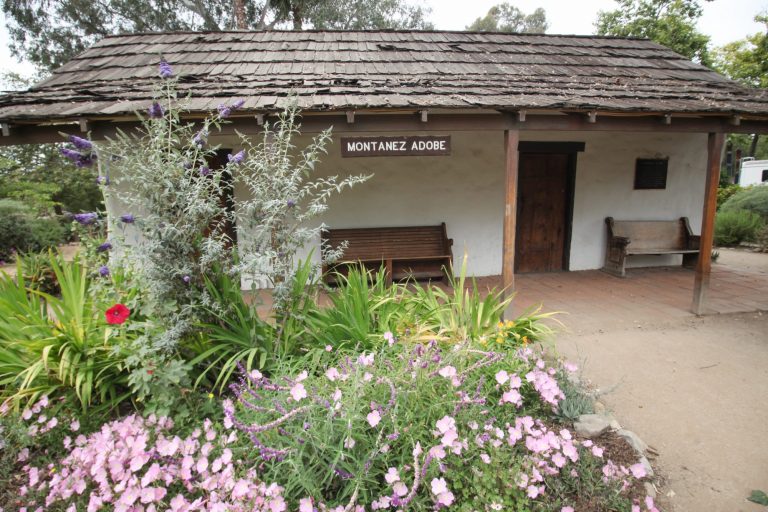San Juan Capistrano Docent Society Member Designed New City Seal
Kimberleigh Gavin, a member of the SJC Docent Society for 13 years, designed the new city seal for San Juan Capistrano. Her design was selected last September and is now being used throughout the city.
The SJC Docent Society asked Kimberleigh to describe the new seal and how the design came to be. Below is her description.
The San Juan Capistrano City Council’s selection of my design for the new City Seal is truly an honor. My thanks go to Helen Gavin who first brought this project to my attention and her subsequent “push” to get it done, my husband Paul’s assistance, the Cultural Heritage Commission’s support, the input from Jerry Nieblas and for receiving the historical families’ blessing.
My goal was to include symbolic images in a City Seal design that would best represent our unique history. Five significant eras in San Juan Capistrano’s history are depicted in the design. They are the Native Acjachemem, Spanish, Rancho, Agricultural times, and the present day. Below are brief descriptions of the design elements and why they were chosen.
Beautiful “Saddleback”, the combination of Santiago and Modjeska peaks is present through all eras as our mountain background and reminds us of our valley geography. These peaks are as visible today as they have been for centuries.
Two Kittchas or native dwellings represent the Acjachemem people, the first inhabitants of the area, and sit near the converging creeks later named “Trabuco” and “San Juan”. This water and related food sources including the oak trees and the Pacific Ocean were the reasons for settling in this valley.
The old San Juan Capistrano Mission bell actually named “San Juan” represents the Spanish arrival and Mission founding in 1776 by Father Serra. His name and that year are on the bell honor his significance to our city. The background hills are dotted with cattle depicting Mission San Juan Capistrano’s vast acreage and the cattle industry that continued through the Rancho era into modern times.
Below the bell, Oranges and Walnuts signify our agricultural heritage. In the late 1800’s most settlers were farmers. Joel Congdon (whose house is now the Ecology Center) began planting English Walnuts in 1870 and from 1893 to 1931 Orange County led the nation in the production of English walnuts, providing 1/3 of the world’s supply. Oranges later became San Juan Capistrano’s leading industry and by 1914, was the major crop for the valley. The oranges also represent Orange County.
The horse and rider illustrate our modern equestrian community, a special and distinctive characteristic of our still semi-rural area.
Prominently displayed is the tiny Cliff Swallow that migrates approximately 7,500 miles from Goya, Argentina every spring and then flies home in the fall. Their arrival is celebrated annually at our Swallow’s Day parade and the cliff swallow’s annual return made the City of San Juan Capistrano world famous.


